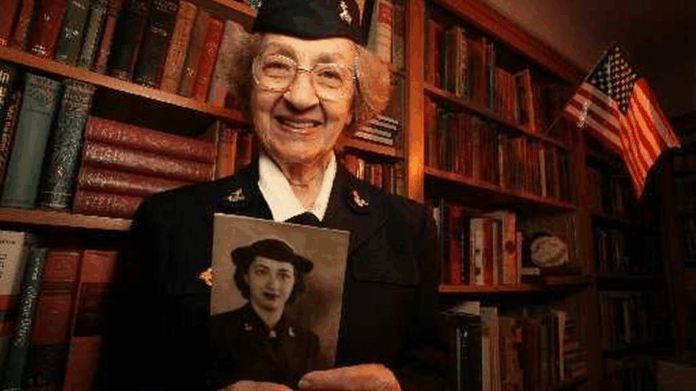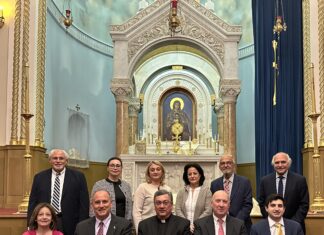(Fresno’s Mary Ekmalian is the current Home Guild President at the California Armenian Home. Here are excerpts of a story from April 19, 2009 published in The Fresno Bee, written by Paula Lloyd and Vanessa Colon, about Arpeni “Penny” Mirigian, Mary’s mother, who helped protect our country during World War II.)
FRESNO — For 50 years, Arpeni “Penny” Mirigian kept the secret about what she really did in the Navy WAVES during World War II. When people asked, she simply said: “I was a radio operator.” “Spy” would have been closer to the truth. From 1943 to 1945, Mirigian was part of an elite group of “intercept operators” who typed up Japanese radio broadcasts to be decoded. The work was top secret. “It was highly classified,” she said. “They drilled into us that we were doing highly secret work, and we couldn’t tell anyone – including when you wrote to your parents.”
The Fresno woman was one of just a few still around to tell their stories. “They were told if they divulged what they were doing, even though they were women, they’d be shot,” said John Gustafson, membership secretary of the U.S. Naval Cryptologic Veterans Association in Pensacola, Florida. “Some still won’t talk about it.” So Mirigian kept quiet. She got married. She had four children. She divorced and – much later – she married again. She taught English at Edison High School for 23 years before retiring. Through it all, nobody knew that she once had lived a very different life. Yet she never forgot about the war, or the four close friends she made in the WAVES – or the blue uniform in her closet that still fits as well as it did five decades ago.
President Franklin D. Roosevelt established the WAVES – Women Accepted for Volunteer Emergency Services – in 1942. The WAVES made up about 2.5% of the Navy’s personnel by the end of the war, according to records from the Naval Historical Center at the Department of the Navy. Women served in a variety of duties, from medical to intelligence. About 4,000 WAVES were intercept operators during World War II, Gustafson said. “By putting women in there, it freed up the men to go overseas,” he said.
Mirigian enlisted in 1943, three months before she was to graduate from then Fresno State College. She was attracted by the uniform — a cute blue with white gloves. The Army’s was a khaki color. It just looked terrible,” Mirigian said. “You’re a woman. You want to look nice.” In November 1943, she boarded a troop train in Fowler. “I was so proud and excited,” she said. “It was an adventure. I was never on a train.”
She rode the train for three days to her boot camp at Hunter College in New York. After six weeks of basic training, she was assigned to Bainbridge Island in Washington. Until then, Mirigian, 21, had never lived away from home. Her task was to listen to Japanese radio broadcasts being made in Morse Code. She sat in a room full of typewriters with headphones on for eight-hour shifts. The intercept operators also included Navy sailors.










